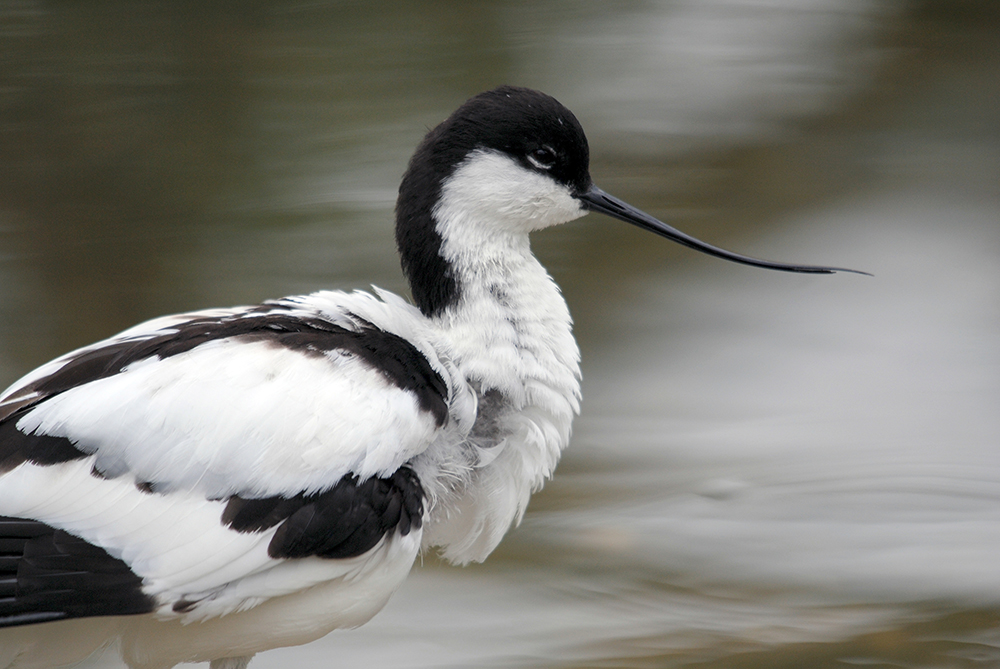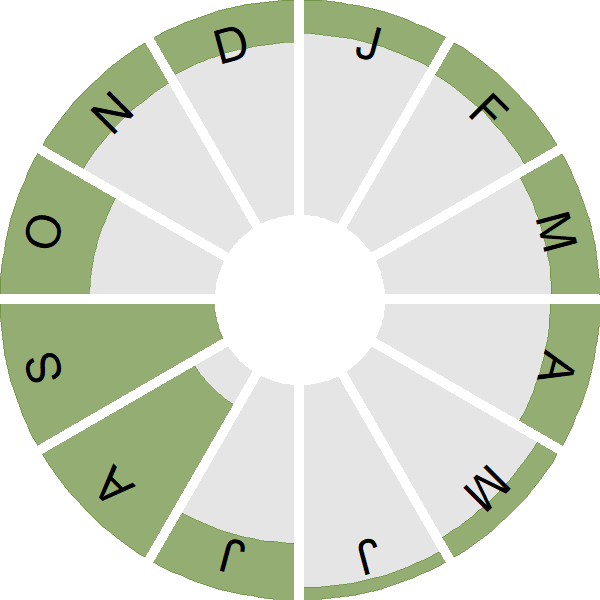Ruff

Introduction
This medium-sized wader can seem ungainly, with its short bill, small head and a halting gait. Sightings logged through BirdTrack reveal that Ruff can be encountered throughout the year, although highest numbers occur in early August, when migration occurs.
Summer plumage is a varied affair in Ruff, with richly-mottled earthy colours and a feathery collar of either russet, black or white, giving rise to their name. Males display communally in front of females at sites known as 'leks'.
In autumn, the Ouse Washes and the nearby Norfolk coast hold the largest concentrations of Ruff, including smart gingery juvenile birds, which can be seen feeding in marshes and wet fields, sometimes accompanying plovers on bare arable land.

Key Stats
Identification
ID Videos
This section features BTO training videos headlining this species, or featuring it as a potential confusion species.
Ruff
Status and Trends
Conservation Status
Population Change
This species was once a more common breeding species in the UK but substantial declines occurred in the 18th and 19th centuries (Birds of England) since when Ruff has been a scarce breeding species. More recently, RBBP figures indicate that the Ruff has suffered a strong decline in breeding numbers in the 25 years to 2019, with a five-year mean of 13 females in the period 2015–2019; the UK range has shifted northwards with most breeding records now coming from Scotland (Eaton et al. 2021).
Distribution
In winter, Ruffs are found at inland and coastal locations, predominantly in England, and are scarce elsewhere. They are very scarce breeders in Britain. Fenland remains a favoured area, but elsewhere breeding is now confined to northwest England and the Hebrides.
Occupied 10-km squares in UK
or view it on Bird Atlas Mapstore.
or view it on Bird Atlas Mapstore.
European Distribution Map
Distribution Change
Change in occupied 10-km squares in the UK
or view it on Bird Atlas Mapstore.
or view it on Bird Atlas Mapstore.
Seasonality
Ruffs are recorded year-round though with a strong peak during autumn migration.
Weekly pattern of occurrence
The graph shows when the species is present in the UK, with taller bars indicating a higher likelihood of encountering the species in appropriate regions and habitats.

Movement
Britain & Ireland movement
Foreign locations of birds ringed or recovered in Britain & Ireland
Dots show the foreign destinations of birds ringed in Britain & Ireland, and the origins of birds ringed overseas that were subsequently recaptured, resighted or found dead in Britain & Ireland. Dot colours indicate the time of year that the species was present at the location.
- Winter (Nov-Feb)
- Spring (Mar-Apr)
- Summer (May-Jul)
- Autumn (Aug-Oct)

European movements
EuroBirdPortal uses birdwatcher's records, such as those logged in BirdTrack to map the flows of birds as they arrive and depart Europe. See maps for this species here.
The Eurasian-African Migration Atlas shows movements of individual birds ringed or recovered in Europe. See maps for this species here.
Biology
Productivity and Nesting
Nesting timing
Egg measurements
Clutch Size
Survival and Longevity
Survival is shown as the proportion of birds surviving from one year to the next and is derived from bird ringing data. It can also be used to estimate how long birds typically live.
View number ringed each year in the Online Ringing Report.
lifespan
Survival of adults
Biometrics
Wing length and body weights are from live birds (source).
Wing length
Body weight
Ring Size
Classification, names and codes
Classification and Codes
- Order: Charadriiformes
- Family: Scolopacidae
- Scientific name: Calidris pugnax
- Authority: Linnaeus, 1758
- BTO 2-letter code: RU
- BTO 5-letter code: RUFF.
- Euring code number: 5170
Alternate species names
- Catalan: batallaire
- Czech: jespák bojovný
- Danish: Brushane
- Dutch: Kemphaan
- Estonian: tutkas
- Finnish: suokukko
- French: Combattant varié
- Gaelic: Gibeagan
- German: Kampfläufer
- Hungarian: pajzsoscankó
- Icelandic: Rúkragi
- Irish: Rufachán
- Italian: Combattente
- Latvian: gugatnis
- Lithuanian: gaidukas
- Norwegian: Brushane
- Polish: batalion
- Portuguese: combatente
- Slovak: bojovník bahenný
- Slovenian: togotnik
- Spanish: Combatiente
- Swedish: brushane
- Welsh: Pibydd Torchog
Research
Causes of Change and Solutions
Causes of change
The decline in UK since 1970s mirrors the pattern shown in larger populations across Europe (Keller et al. 2020). There has also been a change of migration route with most of the main population from Russia now migrating through Belarus rather than western Europe(Rakhimberdiev et al. 2011, Verkuil et al. 2012). This change is believed to have been caused by a deterioration in the quality of staging sites in the Netherlands and, as a consequence of the reduced numbers of passage birds, a long-term recovery in the number of breeding Ruff in the UK is considered unlikely even if suitable habitat exists in the UK.
Publications (2)
Consequences of population change for local abundance and site occupancy of wintering waterbirds
Author: Méndez, V., Gill, J.A., Alves, J.A., Burton, N.H.K. & Davies, R.G.
Published: 2017
Protected sites for birds are typically designated based on the site’s importance for the species that use it. For example, sites may be selected as Special Protection Areas (under the European Union Directive on the Conservation of Wild Birds) if they support more than 1% of a given national or international population of a species or an assemblage of over 20,000 waterbirds or seabirds. However, through the impacts of changing climates, habitat loss and invasive species, the way species use sites may change. As populations increase, abundance at existing sites may go up or new sites may be colonized. Similarly, as populations decrease, abundance at occupied sites may go down, or some sites may be abandoned. Determining how bird populations are spread across protected sites, and how changes in populations may affect this, is essential to making sure that they remain protected in the future.
20.09.17
Papers

Sex differences in the migration, moult and wintering areas of British-ringed Ruff
Author: Gill, J.A., Clark, J.A., Clark, N.A. & Sutherland, W.J.
Published: 1995
01.01.95
Papers Ringing and Migration

